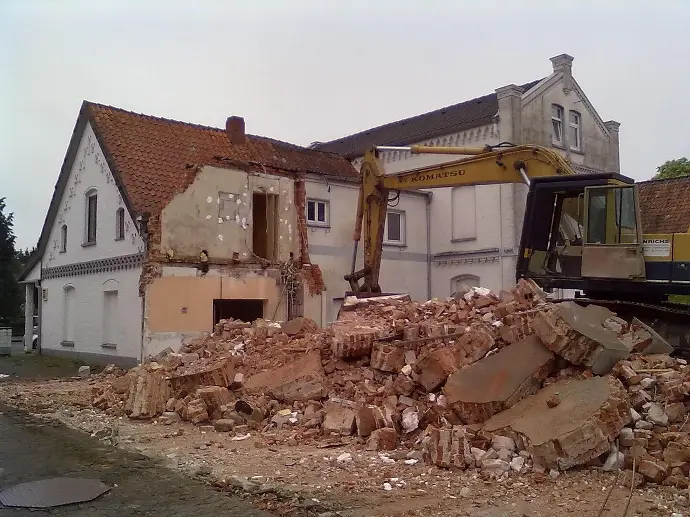Living Through Your Home Addition: A Montgomery County Homeowner's Guide
As contractors who have guided countless families through new builds across Montgomery County, I've seen firsthand how living through construction can test even the most patient homeowners. But with proper planning and the right expectations, staying in your home during an addition project can be both feasible and cost-effective. Let's explore everything you need to know about making this important decision.
If you're still unsure whether you should build or move, check out our article: Home Addition or Sell Your House?
Still considering the style of your new home addition? Check out: Types of Home Additions
Understanding the Impact on Your Daily Life
One of the most common questions homeowners in Montgomery County ask me is, "Can we really live here during construction?" The answer isn't always straightforward. The key to successfully living through a home addition is understanding exactly what you're getting into. It's not just about the physical space—it's about adapting your entire routine. When you have children, pets, or you work from home, this can become a more complicated process.
Assessing Your Project's Scope
The complexity of your addition plays a crucial role in determining whether staying put is practical. Here in Montgomery County, where many homes date back to the early 1900s, we often encounter unique challenges that can affect your living situation. For instance, when working on older homes its possible to discover hidden issues like portions of electrical systems including original knob-and-tube wiring that may require immediate attention.

The Reality of Construction Zone Living
Living through construction means embracing some temporary lifestyle changes. The noise typically starts around 7 AM, following Montgomery County's construction ordinances, and continues throughout the day. But there are ways to make it work:
Managing Your Space and Safety
Safety becomes paramount when sharing your living space with an active construction site. The key is creating clear boundaries between living and construction zones; we recommend setting up dedicated pathways and using high-quality dust barriers to maintain a clean living environment. This is something we assess when planning your home addition build.
In the Glenside and Elkins Park areas, where many homeowners are currently expanding their properties to accommodate growing families, we've developed specific strategies for coexisting with construction:
- Establish a temporary kitchen setup if your addition affects cooking spaces
- Create designated "clean zones" where family members can retreat from construction
- Implement strict safety protocols, especially important for homes with children or pets
- If working from home, ensure your workspace is not affected by construction noise, consider renting a workspace, or find a local place in the community.
Remember home additions can take a significant amount of time even without the common occurrence of unexpected changes. Below is a chart outlining what you can ideally expect from your home addition timeline. Find more at Home Addition Process.
Making the Stay-or-Go Decision
One might ask, "Does living on-site during construction really save money?" Based on current rental rates in Montgomery County, staying in your home during construction can save between $2,000-$4,000 per month in temporary housing costs. However, this decision shouldn't be based solely on finances and should be based on your specific circumstances and tolerance for noise and disruption to your routine. To better understand the financing process, check out Financing a Home Addition or Renovation.
Consider the following crucial factors when deciding whether to live through your home addition:
Project Timeline and Intensity
For shorter projects, like a sunroom addition, living on-site often makes sense. If the addition is fully separated from a home with currently existing doors or walls that need to be removed or modified, often there is minimal disruption to a homeowner's ability to keep living in the home relatively undisturbed by physical work. Noise is another factor to consider, especially if working for home or if the project takes place during the summer and you have school age children who will be home more frequently.
However, for major renovations like second-story additions common in Cheltenham's growing neighborhoods, temporary relocation might be worth considering. In some cases temporary relocation might be required as your township or borough may deem the home uninhabitable during construction. This can more frequently occur when building second or third story additions as the disruption the home's envelope can be more significant.
Health and Safety Considerations
If your home was built before 1978, like many in Montgomery County's historic districts, special considerations come into play regarding lead paint and asbestos. Professional testing and proper containment become essential for families choosing to stay during construction. These are factors we consider at Neven & Son before cracking open any walls.

Local Resources and Support
In Montgomery County, we're fortunate to have access to excellent support services for homeowners undertaking additions. The Montgomery County Planning Commission offers guidance on permits and zoning requirements, while local organizations can provide temporary storage solutions during construction.
Practical Tips for Success
If you decide to stay during construction, here are proven strategies for success.
- Create a detailed daily schedule that works around construction hours
- Establish clear communication protocols with your contractor
- Set up temporary living spaces that mirror your normal routine as much as possible
- Invest in quality air purifiers to maintain healthy air quality
At Neven & Son Contractors we help walk you through these and other options dependent on the scope of your project.
Conclusion
Remember that while living through construction presents challenges, it's temporary. Many of our clients in Jenkintown and surrounding areas have successfully navigated this process, ending up with beautiful additions that enhance both their living space and property value.
Living through a home addition requires careful planning, clear communication, and realistic expectations. Whether you're in Jenkintown's historic district, Abington's growing suburbs, or Philadelphia's uniquely spaced and structured communities, understanding what lies ahead helps ensure a successful project outcome. Remember, the temporary disruption leads to lasting improvements in your home's functionality and value.
For more specific guidance about your particular project, consider consulting with Neven & Son Contractors about Montgomery County and Philadelphia's unique housing stock and building requirements. They can provide tailored advice based on your home's specific characteristics and your family's needs.